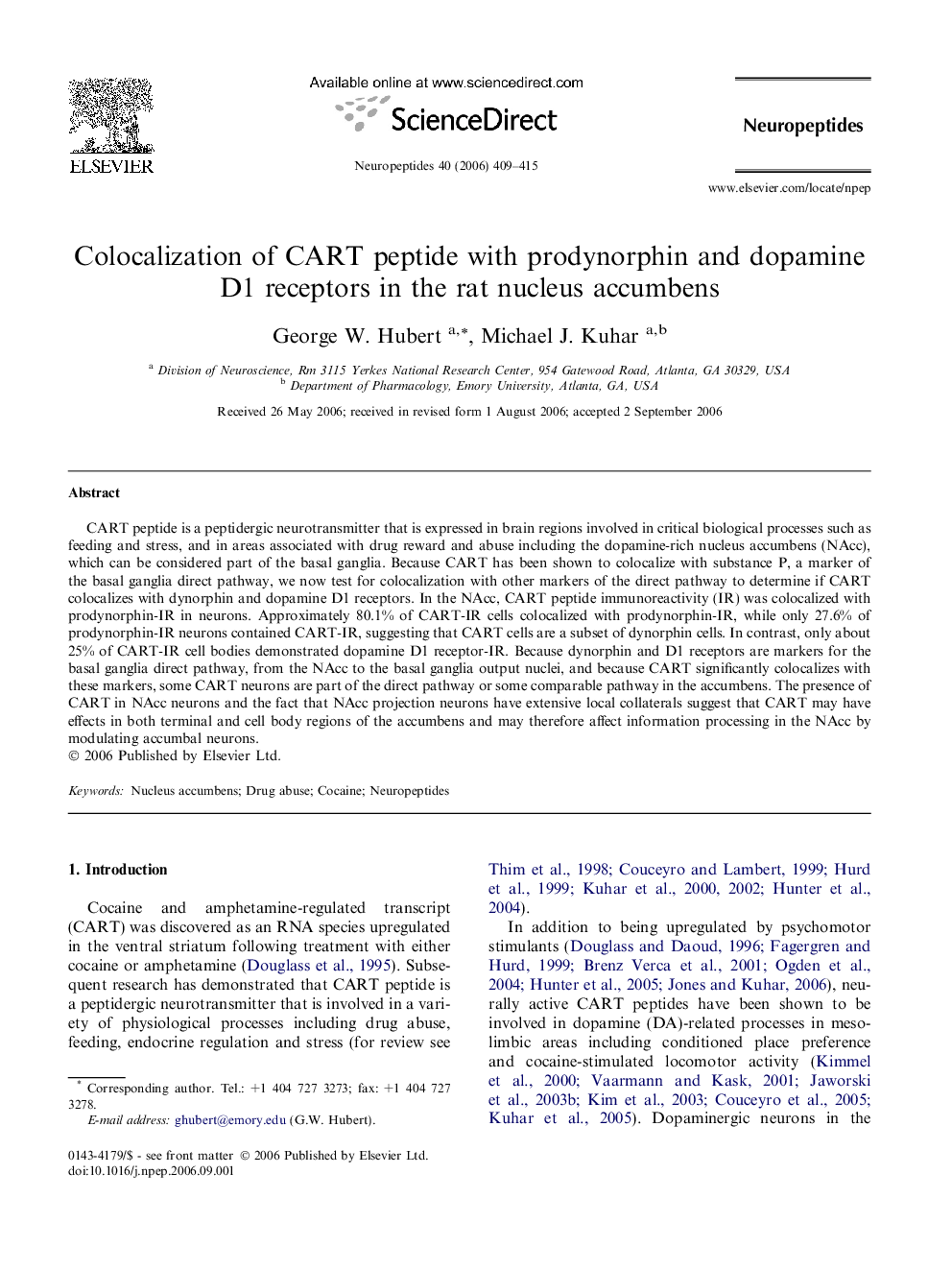| Article ID | Journal | Published Year | Pages | File Type |
|---|---|---|---|---|
| 2808367 | Neuropeptides | 2006 | 7 Pages |
CART peptide is a peptidergic neurotransmitter that is expressed in brain regions involved in critical biological processes such as feeding and stress, and in areas associated with drug reward and abuse including the dopamine-rich nucleus accumbens (NAcc), which can be considered part of the basal ganglia. Because CART has been shown to colocalize with substance P, a marker of the basal ganglia direct pathway, we now test for colocalization with other markers of the direct pathway to determine if CART colocalizes with dynorphin and dopamine D1 receptors. In the NAcc, CART peptide immunoreactivity (IR) was colocalized with prodynorphin-IR in neurons. Approximately 80.1% of CART-IR cells colocalized with prodynorphin-IR, while only 27.6% of prodynorphin-IR neurons contained CART-IR, suggesting that CART cells are a subset of dynorphin cells. In contrast, only about 25% of CART-IR cell bodies demonstrated dopamine D1 receptor-IR. Because dynorphin and D1 receptors are markers for the basal ganglia direct pathway, from the NAcc to the basal ganglia output nuclei, and because CART significantly colocalizes with these markers, some CART neurons are part of the direct pathway or some comparable pathway in the accumbens. The presence of CART in NAcc neurons and the fact that NAcc projection neurons have extensive local collaterals suggest that CART may have effects in both terminal and cell body regions of the accumbens and may therefore affect information processing in the NAcc by modulating accumbal neurons.
